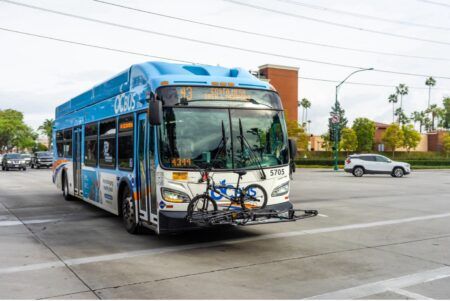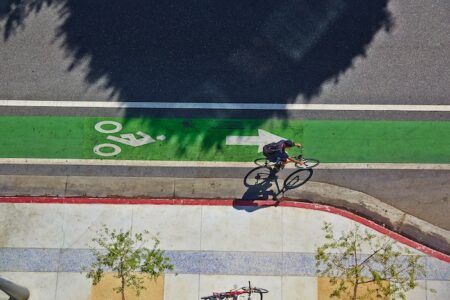 Patrick Doherty, head of emerging verticals at Elavon Europe, takes a look at some of the ways in which transportation services must evolve in a post-Covid world, in order to restore confidence, and provide a new level of convenience, with particular focus on touchless and frictionless payment systems
Patrick Doherty, head of emerging verticals at Elavon Europe, takes a look at some of the ways in which transportation services must evolve in a post-Covid world, in order to restore confidence, and provide a new level of convenience, with particular focus on touchless and frictionless payment systems
Daily life has changed radically across the UK’s towns and cities in the wake of Covid-19. With the journey to recovery well underway and lockdown measures set to ease, new travel patterns and use of the transport networks will emerge over the coming months.
Technology and payments, in particular, play a critical role in helping towns and cities run more efficiently. Many of us effortlessly use touchpoints and kiosks to pay for parking. We collectively tap our phones, oyster cards and bankcards to hop on the local bus. After a year of households staying close to home, public transport use has declined. We should look to restore confidence in travel across our infrastructure to help ensure transportation is convenient, adaptable, and sustainable for future generations.
By taking note of emerging payment patterns and peak hours, there is an opportunity for operators, businesses and local authorities to improve how we plan, deliver and pay for our travel networks. Each touchpoint of our journey should be convenient and seamless. For example, on a typical workday at a city office, a commuter might drive to a local rail station and stop along the way to pay for fuel. At the rail terminal, they pay to park their car and purchase a ticket or use a season pass for onward travel to a city. Upon disembarking, they pay by contactless method for onward travel to their office. This trip should be as efficient and relaxed for the traveller as possible.
The effects of the Covid-19 pandemic on public transport were felt immediately after the Stay at Home restrictions were announced. Figures from Elavon’s recent whitepaper, “Payments in Transit” reveal a 90% drop in passenger volumes on UK National Rail in the first few months of the pandemic. Businesses enabled remote working and millions of people set up desks in studies and at kitchen tables. Data from the Department of Transport reveals that daily passenger volumes on the London Underground began slowly dropping at the beginning of March 2020 before the lockdown measures were announced, and after the first lockdown started were down to just 4% of what had been seen in an equivalent week the previous year, by March 28, 2020.

Restoring confidence in public transport will be a challenge, but innovative technologies and applications that make travel more convenient help bridge the gap. For example, the City Mapper app allows travellers to choose journey times with fewer people and even points you to the emptiest carriages on the train or bus. Additionally, MiPermit offers cashless parking payments and digital permits in more than 10,000 locations, enabling customers to pay safely without needing to leave the car.
Nervousness around public transport inevitably led to a growth in private travel such as cars, bicycles and taxis during the pandemic. These options provided additional safety and convenience for people looking to minimise face-to-face contact. In September 2020, private car travel reached peak usage of 107% in the UK, compared to the previous year, whilst National Rail trips on the same day were only at 41% of the level seen in 2019, despite eased restrictions. The sector should consider how continued private travel use will impact the flow and volume of traffic around towns and cities. There may be opportunities to improve capacity in private and public car parks. Also with fewer people using cash and real concerns around hygiene, many will welcome efficient payment methods that help keep people safe. Digital payments can play a key role in supporting this these initiatives.
The impact of increased private travel on the environment should also be considered. With more cars on the road, reducing air pollution by keeping carbon emissions low is vital. Contactless payment at toll-roads can reduce the queues of vehicles and the idling engines that contribute to air pollution. As the popularity of electric vehicles increases and petrol and diesel models begin to be phased out, we need the right infrastructure with ample charging stations (and payment acceptance) in public spaces and car parks.

We’ve also seen the growth in cycling for private transport. More towns and cities employ designated cycling lanes that encourage us to reduce our carbon footprint. In the coming months, as we emerge from the pandemic, we will see if private travel continues at pace, and if so, how we can better support meeting environmental targets.
Another factor to consider as transport use resumes is the return of employees to offices in city centres. Some companies may require working five days in an office, but others have seen high-productivity from home working and an opportunity to lower real estate costs. These employers may take a more flexible, hybrid approach, and this may again shape how and when we use transport.
When customers feel reassured that transport is convenient and safe, usage should begin to return. Innovation in payment technology can help play a part in restoring confidence by reducing queuing, supporting health and safety efforts, and contributing sustainability as we emerge from Covid-19.





